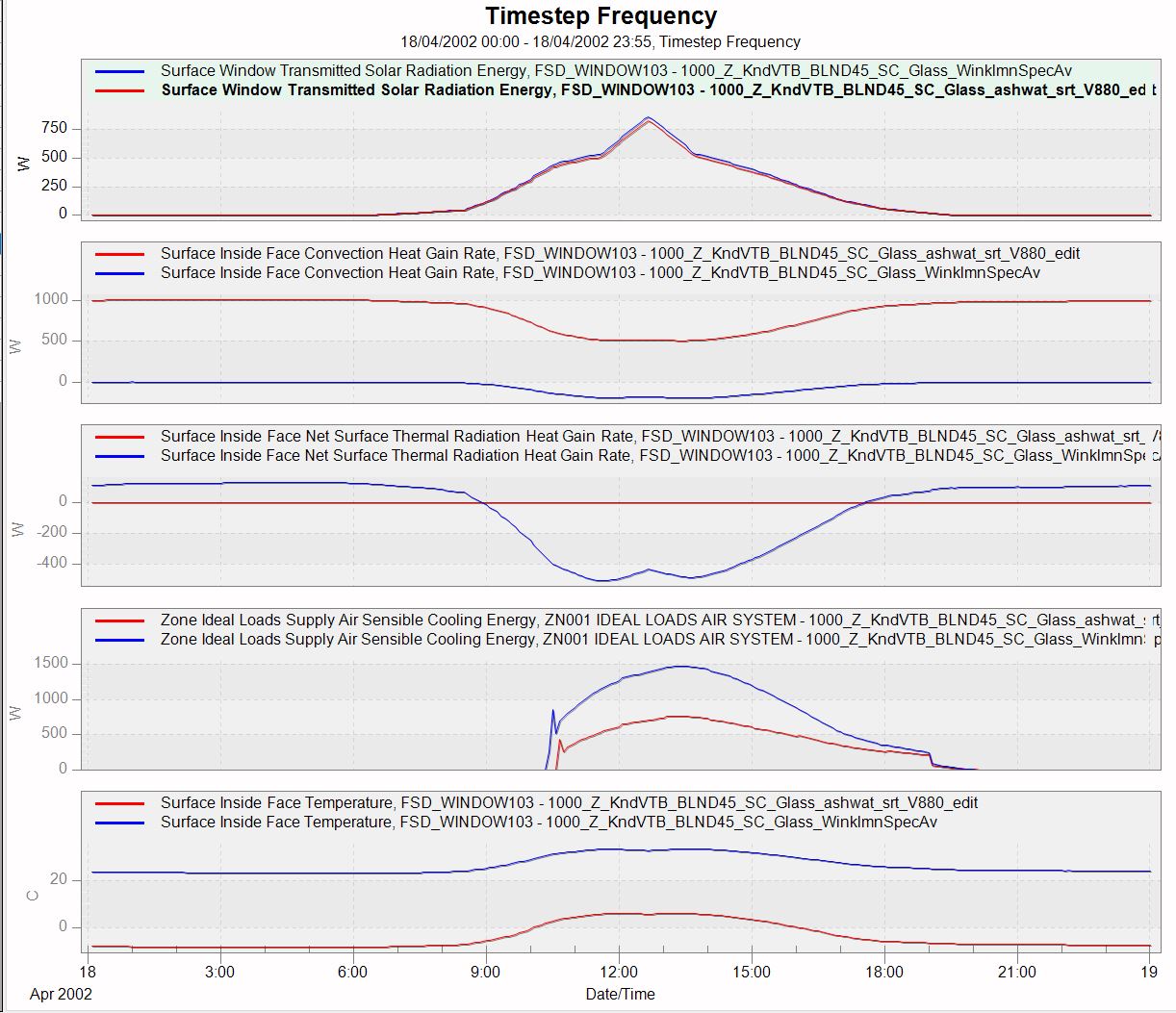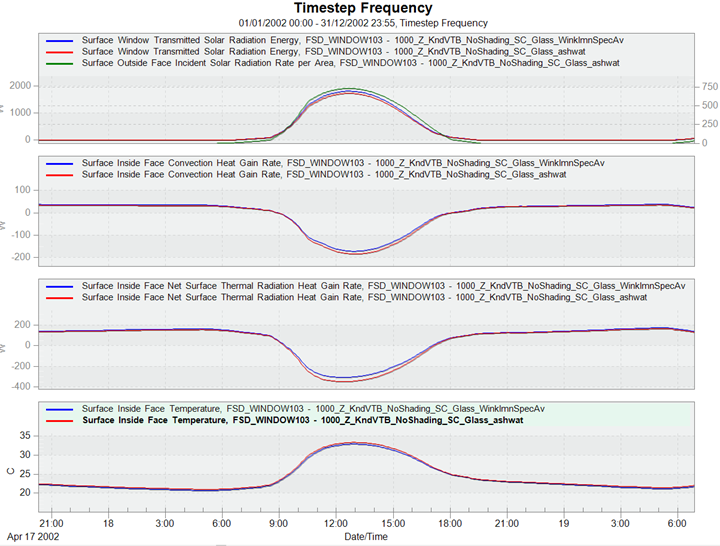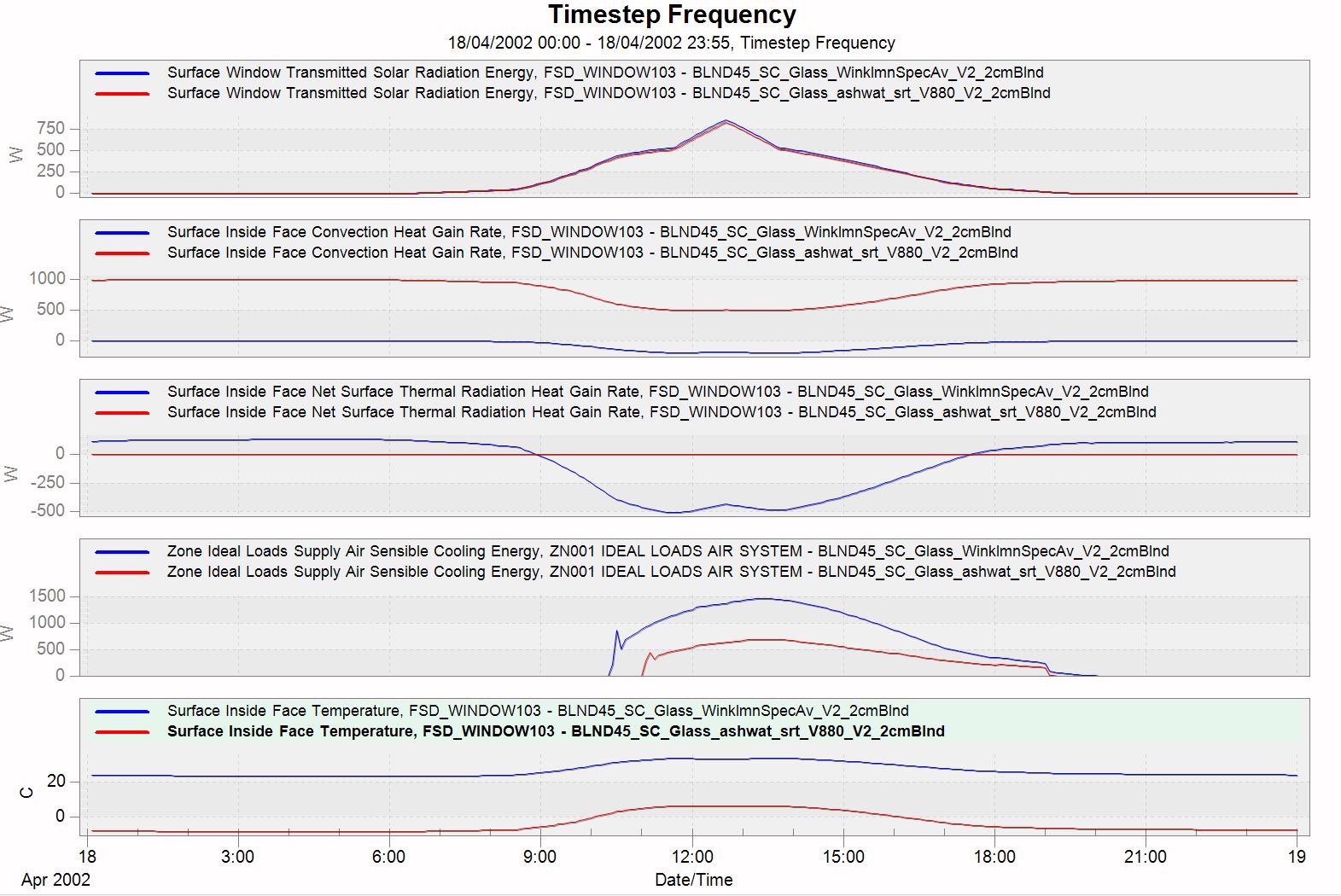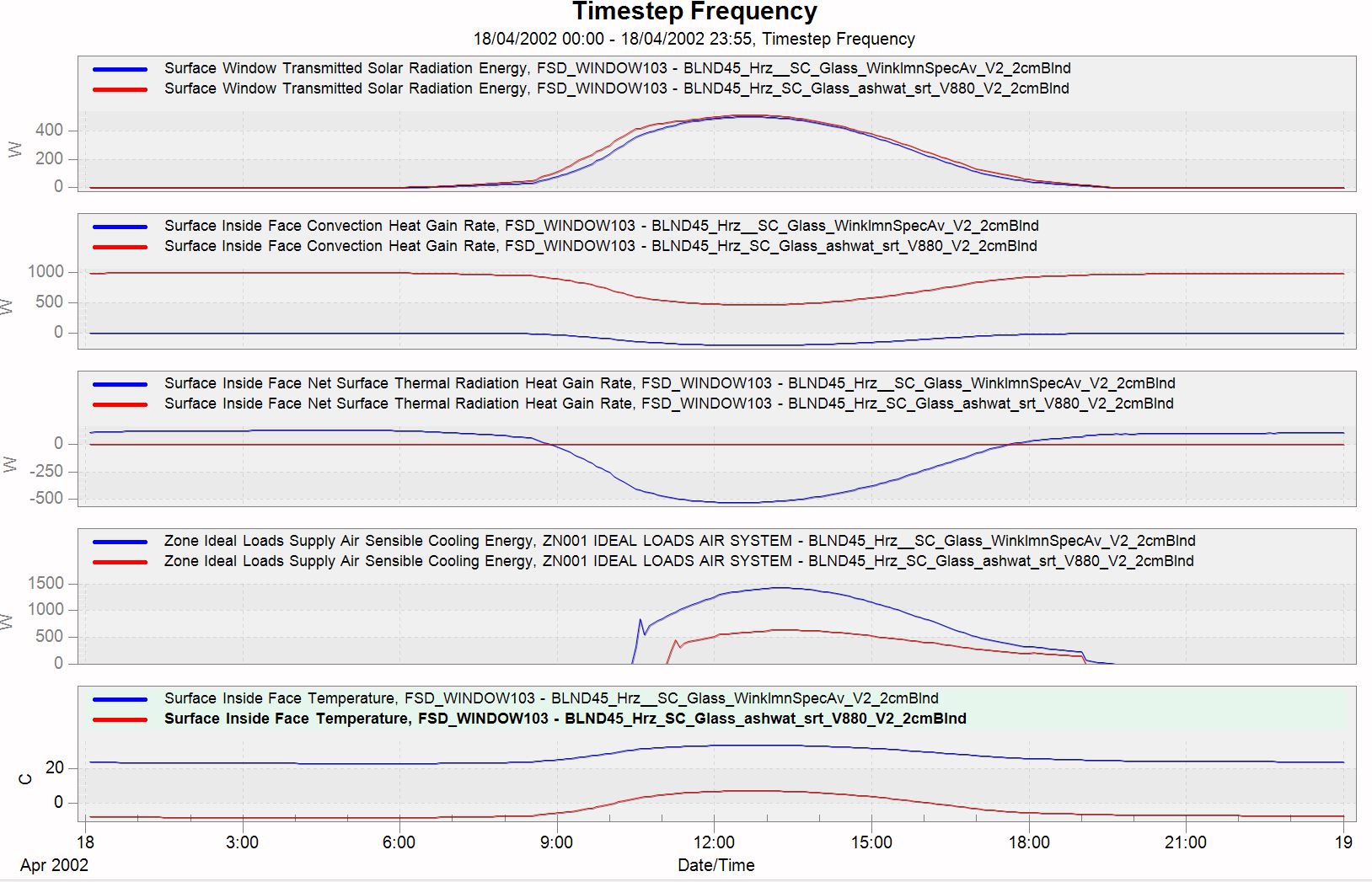I am trying to model vertical blinds and I am getting inconsistent results when modelling this system with the WindowMaterial:Blind (Winkelman, blue in graphs below) and WindowMaterial:Blind:EquivalentLayer(Ashwat, red in graphs below)
I mainly have doubts about the results I get with the ASHWAT model. I tested vertical blinds, 127 cm wide and positioned at a static 45 degrees using both modelling approaches. To be able to simulate 127 cm wide blinds in the equivalent layer model I had to overwrite the maximum width in the IDD file (set to 2.5 cm by default).
Transmitted solar radiation is consistent for both models but the equivalent layer approach gives extremely low indoor surface temperatures (lower than indoor and outdoor temp), no radiative exchange and very high convective exchange.

These links contain the two IDF's I used for this comparison:
The glazing properties are defined differently in each model. I aligned these properties using LBNL-window and I do get consistent and plausible results when I model glazing system without blinds using these models:

I am using EnergyPlus 8.8 for reasons outlined in the answer to this post.





